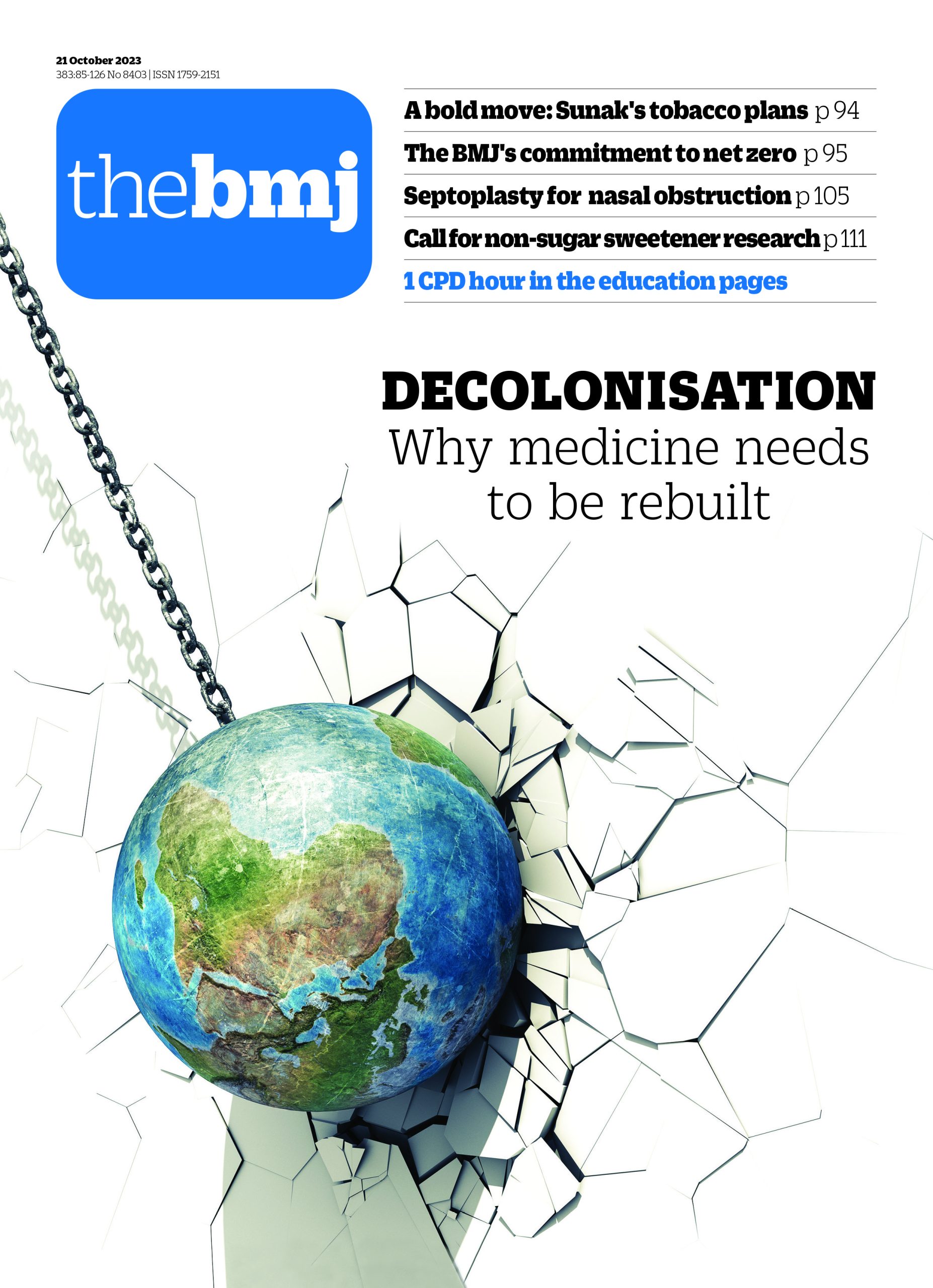Blood
How can we ensure that the right patient gets the right blood at the right time?
- Cheng-Hock Toh, professor and honorary consultant in haematology1
- 1University of Liverpool and Liverpool University Hospitals NHS Foundation Trust, UK
The Infected Blood Inquiry’s final report, due in spring 2024, signals a welcome shift towards better blood management for patients. Chief scientific officer of NHS England Sue Hill recently announced pioneering blood group genotyping for inherited anaemias, which should help patients receive better matched blood.1 And in 2022, the national medical director of NHS England Stephen Powis wrote to Trust medical directors recommending the wider use of tranexamic acid to reduce bleeding in surgery.2
In the UK, blood is used to provide lifesaving support for around 3500 patients each day,3 but mistakes with transfusions recur, despite numerous warnings from the NHS central patient safety alerting system. The number of deaths related to blood transfusions has more than doubled since the covid-19 pandemic4 and the Serious Hazards of Transfusion group reports that these numbers have not returned to pre-pandemic levels, remaining at or above 35 deaths per annum since 2020.45
This is deeply concerning but not entirely surprising in an overstretched NHS, yet immediate and sustainable improvements are achievable. Firstly, we must effectively reduce blood loss and unnecessary use of blood. A huge body of evidence supports use of tranexamic acid to reduce major surgical bleeding by 25%, thus avoiding unnecessary blood use.2 Tranexamic acid is an inexpensive drug championed by UK Medical Royal Colleges,6 but the 2021 National Comparative Audit in Blood Transfusion showed that up to one third of eligible surgical patients are not receiving tranexamic acid.7
Secondly, we must provide better matched blood. Under current practice of matching for ABO and rhesus D blood groups, 3% of patients—around 100 a day—form antibodies after a single transfusion episode.8 This can cause reactions or delays when patients need further transfusions, and is particularly problematic for patients who require repeated transfusions, or for those with anaemia who can be rendered un-transfusable because of a lack of compatible blood. The international Blood transfusion Genomics Consortium has shown that extending blood typing to all clinically relevant antigens using automated DNA-based arrays makes it three times more likely that blood safe for transfusion will be identified.9 Such genotyping technology is increasingly affordable and could benefit patient groups, such as those with sickle cell disease.10
The third area requiring development is the ability to track and trace blood from donor to recipient. Collectively described as “vein-to-vein transfusion”, the process covers the entire blood transfusion chain to prevent the wrong blood being administered and to identify infections that are potentially transmittable by transfusion. Guidance and templates for implementing these digital systems are available but take-up remains patchy, with up to one third of hospitals still lacking the information technology capability.11
Clear, timely opportunities for improvement exist. With implementation of the Health and Care Act 2022,12 leadership by integrated care boards in standardising and benchmarking transfusion performance between hospitals could deliver better patient blood management. This would save lives and avoid disastrous “never events” in transfusion. However, approaches involving interdisciplinary sectors require strategic leadership to ensure equitable benefits for all patients across the UK. With the 2022 publication of Data Saves Lives,13 proposals that harness artificial intelligence in genomic medicine hold promise for innovations and efficiency gains in transfusion practice. With 1 million (80%) of UK donors due to have a blood grouping profile informed by genotype, personalised transfusion is no longer unrealistic. Individualised transfusion thresholds and optimised intervals for transfusion-dependent patients are attainable aspirations.
The barriers to better blood management are all too familiar. But the challenges of workplace culture, funding, and time for an overstretched workforce could be overcome even without waiting for the newly promised government investment in the NHS. A quick fix would be in using available IT systems to enhance traceability and timely use of blood. There is no excuse for NHS Trusts to not comply with standards of the National Institute for Health and Care Excellence14 or not participate in national comparative audits,7 whether in transfusion medicine or otherwise.
Recommendations from the Infected Blood Inquiry might well catalyse these necessary changes for transfusion to be a key national quality and safety indicator for patients. Blood use is universal, and the World Health Organization has long called for vigilance to avoid unnecessary transfusion and unsafe transfusion practice. The snapshot in the UK is disheartening because transfusion delays and transfusion associated circulatory overload, caused by over transfusion, remain the most common causes of transfusion related mortality.4 Preventing such avoidable harm is not difficult—it needs clear leadership and resolve to make the right decisions to use blood effectively and for the right blood to be transfused in a timely manner.
Footnotes
-
Competing interests: The author is chair of the National Blood Transfusion Committee and chair of the NHS Blood and Transplant Data Management Committee.
-
Provenance and peer review: not commissioned, not externally peer reviewed

